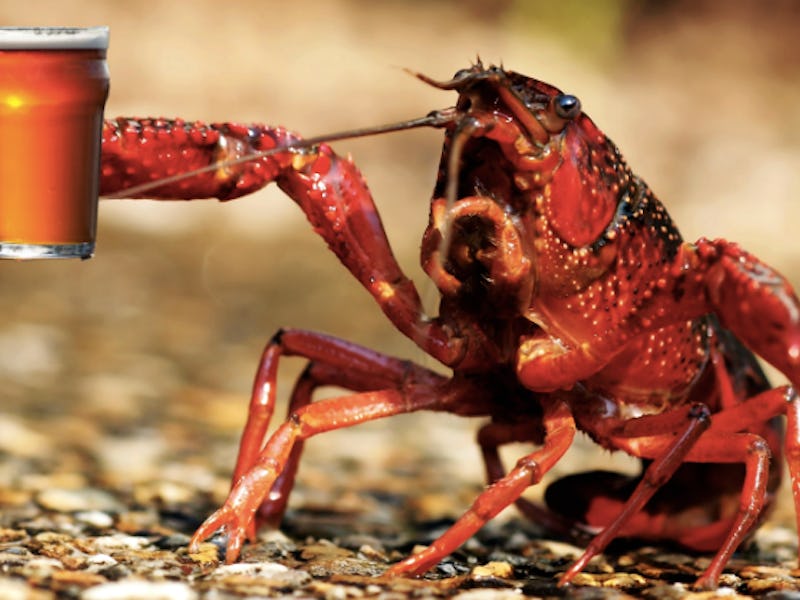Scientists aren’t sure why alcohol turns some people gregarious and others violent, but some think that the key to solving this mystery is to get a bunch of crayfish drunk. Because alcohol, unlike other drugs, affects a range of neurotransmitters instead of specific receptors in the human brain, it’s difficult for researchers to fully understand how booze affects the nervous system. Recently, scientists learned that freshwater crustaceans serve as a pretty good model for drunk humans when they’re boozed up.
In a recent paper published in the Journal of Experimental Biology, a team of University of Maryland scientists report that “social” crayfish were much more sensitive to the effects of alcohol compared to crayfish that have lived in isolation. Rich social environments (in this case, a tank of crayfish who have been living together for a while), the study suggests, lead to more rapid intoxication when there’s exposure to alcohol.
“Our study shows that social experience can change the sensitivity to acute alcohol,” said lead author and psychology professor Jens Herberholz in a statement. “Inebriated people could potentially have different responses to alcohol depending on their prior social experience.”
These crayfish are drunk.
The study compared the effects of booze on a group of crayfish who had been sharing the same tank for a week and another group of crayfish who had been living in isolation for a week. After this period, individuals from each group were placed in different tanks of dilute alcohol for about three hours.
While the crayfish were in the booze tank, the researchers noticed three stages of behavioral changes: After a few minutes, the crayfish began to display “an elevated stance with fully extended walking legs and upheld abdomen.” Later, they enthusiastically produced “spontaneous tail-flips.” And finally, they lost control of their motor coordination and laid on their backs — not unlike intoxicated humans.
Crayfish parties: Better with friends.
The scientists discovered that the two groups of crayfish reacted very differently after being dropped into the tanks with the highest alcohol content. The crayfish that lived in groups took just about 20 minutes to reach the drunk, tail-flipping phase. Those that had been living alone, in contrast, took about ten minutes longer to reach that stage.
Throughout the experiment, the researchers used intracellular electrodes to measure the neurological changes taking place in the crayfish. Neural circuit analyses revealed that alcohol had a greater effect on a neurotransmitter called GABA that inhibits behavior among the social crayfish, which loosened their inhibitions to a greater degree.
“These results significantly improve our understanding of the mechanisms underlying the interplay between social experience, alcohol intoxication, and nervous system function,” the researchers write.
Because crayfish have already proven to be a good analog to humans when studying the effect of drugs like amphetamines and cocaine on the body, Herberholz is confident that his results are comparable to how humans would react in a similar environment. He’s hopeful that his findings will eventually help lead to the development of treatment for alcohol abuse. Until then, the takeaway of this study is that you shouldn’t be surprised if you feel the effects of booze more intensely if you’ve been a social butterfly — and if you’ve been acting like a hermit this week, it may take you a little longer to get on the same level as your partying peers.
